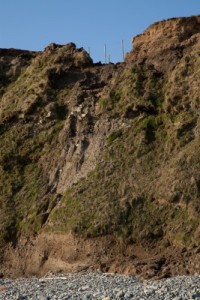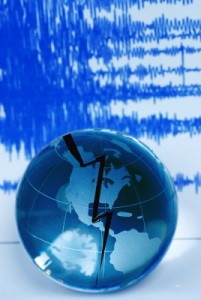On March 28, 2013, the cliffs of Whidbey Island off the coast of Washington state slid into the Pacific Ocean. The next day, on March 29, 2013, a large section of the UK’s famous white cliffs of Dover broke away and crashed into the English Channel. Tons of rock collapsed into the sea between Langdon Cliffs and South Foreland Lighthouse.
What’s Going On?
People are guessing that freezing conditions over the winter may have weakened the chalk cliffs of Dover. They are also guessing that heavy rains weakened the cliffs of Whidbey Island, halfway across the globe. Water does expand in freezing conditions, but these cliffs have stood for millennia withstanding winter ice and Spring storms. What’s different today?
Landslides and Earthquakes
On February 7, 2008, the biggest earthquake in the UK in 25 years shook the island country. On average, several hundred earthquakes are detected by the British Geological Survey each year, but most are too faint to be felt, and generally cause very little damage. But, there have been 62 earthquakes in the past year along the North Mid-Atlantic Ridge located SSW from the UK , with the largest a 5.7 earthquake in 2013. These quakes can influence the island of Great Britain.
Whidbey Island off the coast of Washington state is on the Juan de Fuca tectonic plate, which is one of the smallest of the Earth’s tectonic plates, but one of the most dangerous earthquake zones on the planet. The north-west coast of the USA could be devastated by a huge movement of the Juan de Fuca. In 2008, small earthquake swarms began within the Juan de Fuca, and more than 600 quakes were occurring within 10 days periods.
On The Rise
Since 2008, earthquake activity has increased around the globe, destabilizing the weakest parts of the Earth’s crust. Fueled by both internal and external forces, the Earth is now in a dynamic state of motion. Earthquakes send out a strong resonance that can create powerful winds and a tremendous force that stresses the crust. Today, the forces holding the Earth in place are changing…and the increase in natural disasters is our living proof.
Watch for more landslides worldwide in the areas resonating from the increase in earthquakes along the coasts.
Remember the old saying ….. When mountains tumble into the sea…?


